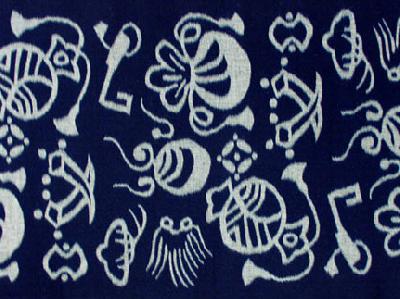|
Yuko Tamanaha was born in 1936 in Ishigaki, Okinawa Prefecture. In 1996, he was designated as a Living National Treasure for his 'bingata' dyeing work.
Bingata is a splendid dyeing craft that symbolises the culture of the Ryukyu dynasty. Its color reflects the colors of Okinawan nature. Professional artists compete with each other to succeed and pursue these traditional skills. And Bingata is a dyeing craft that is unique to Okinawa.
Tamanaha studied dyeing under Eiki Shiroma, the 14th in the Shiroma family and one of the three head families of Bingata. When he was 34, Tamanaha began to send his work to exhibitions and received many prizes for excellence.
His career is brilliant but his work is a steady repetition of tasks. The handiwork requires finesse and endurance and considerable effort leads to beautiful work.
Tamanaha is now engaged in making bingata with his family at his studio: the Tamanaha Bingata Institute in the village of Yomitan.
Bingata is a splendid dyeing craft that symbolises the culture of the Ryukyu dynasty. Its color reflects the colors of Okinawan nature. Professional artists compete with each other to succeed and pursue these traditional skills. And Bingata is a dyeing craft that is unique to Okinawa.
Tamanaha studied dyeing under Eiki Shiroma, the 14th in the Shiroma family and one of the three head families of Bingata. When he was 34, Tamanaha began to send his work to exhibitions and received many prizes for excellence.
His career is brilliant but his work is a steady repetition of tasks. The handiwork requires finesse and endurance and considerable effort leads to beautiful work.
Tamanaha is now engaged in making bingata with his family at his studio: the Tamanaha Bingata Institute in the village of Yomitan.
| [+ADDRESS] | 
|





















